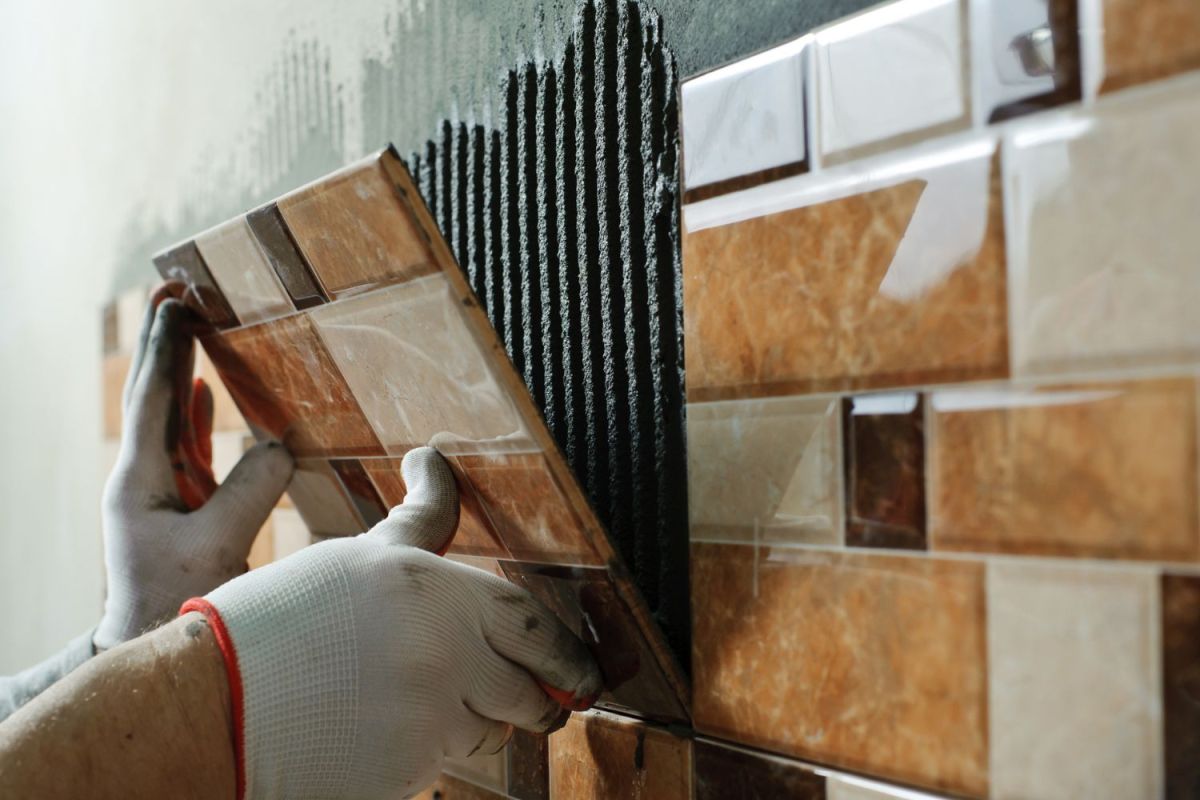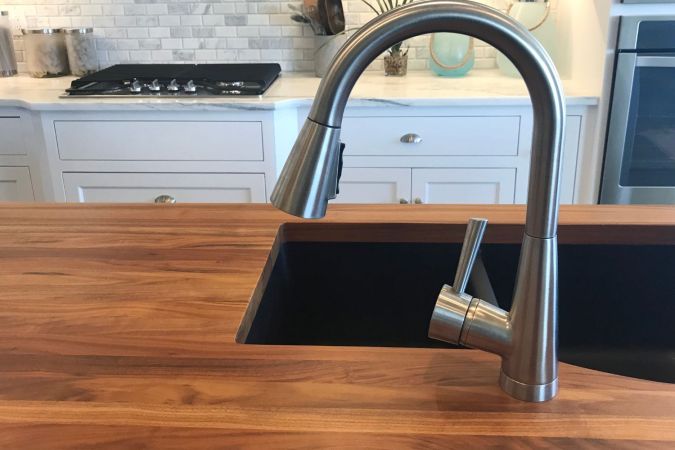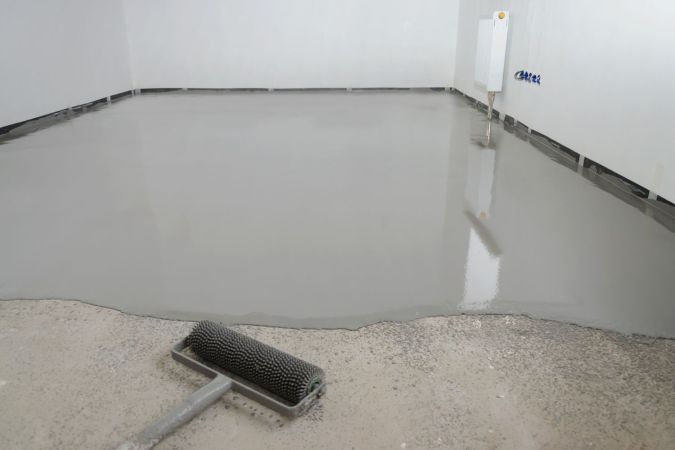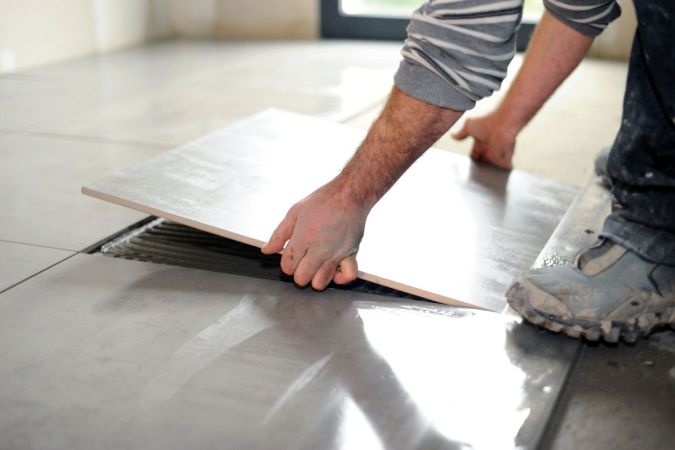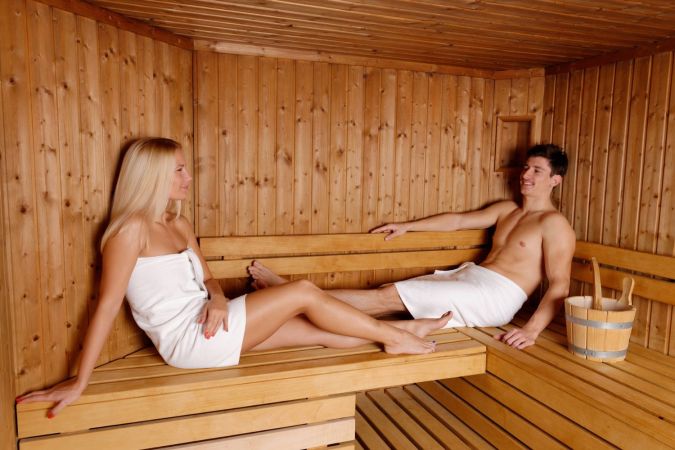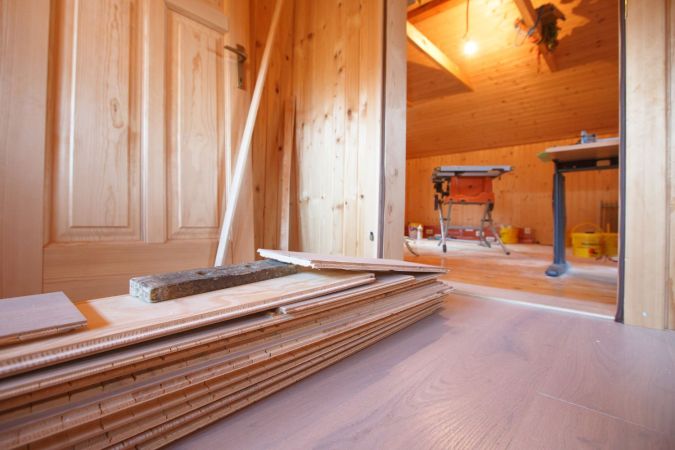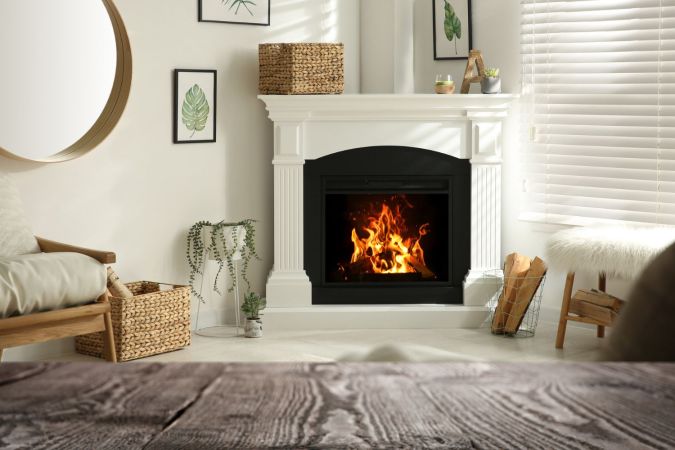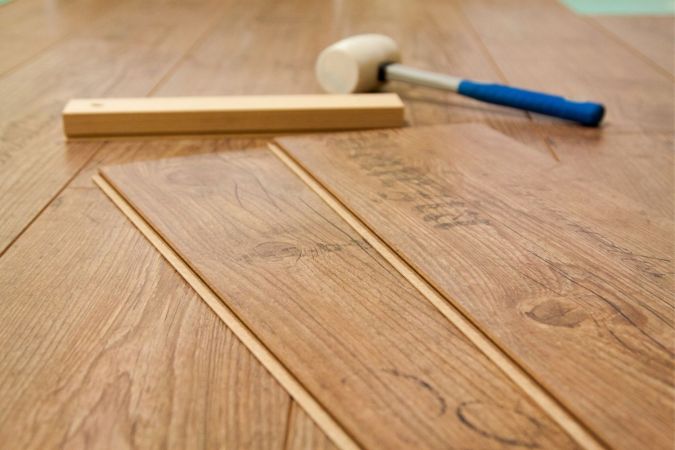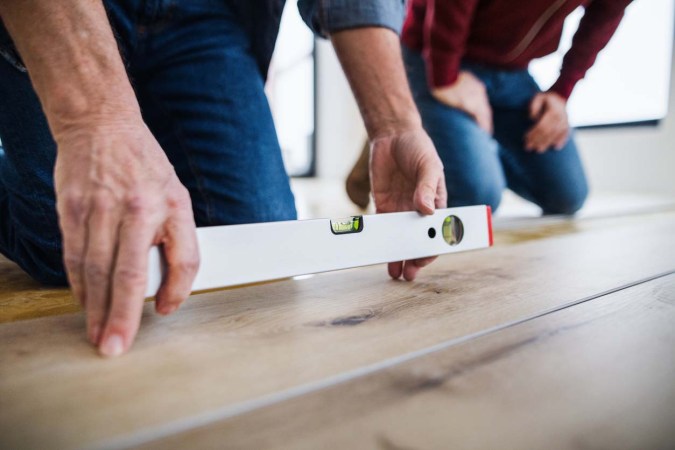We may earn revenue from the products available on this page and participate in affiliate programs. Learn More ›
Highlights
- The cost to install a backsplash typically ranges from $592 to $1,317, with homeowners paying an average of $1,000 nationally.
- The main factors that affect the total cost of backsplash installation include the size of the area, the materials used, the size and shape of the material used, the installation location, and labor.
- A backsplash has many benefits, including protection against moisture and pests, easier cleaning and maintenance, numerous customization options, and a potential increase in home value.
- A homeowner with DIY experience may be able to install a basic backsplash on their own, but hiring a professional is recommended for complicated installations or for homeowners who aren’t confident in their DIY skills.
Homeowners can transform the look of their kitchen with a backsplash renovation that involves a variety of colors, textures, patterns, and materials. The overall backsplash installation cost can vary due to the type and amount of material that is used. According to HomeAdvisor and Angi, backsplash installation cost ranges from $592 to $1,317, with the national average at $1,000. Peel-and-stick removable backsplashes, beadboard, ceramic tile, and vinyl tile are typically the most budget-friendly backsplash options, while stone slabs and custom mosaic backsplashes are the most expensive. The cost of a backsplash ranges from approximately $11 per square foot to as much as $310 per square foot, including installation. The cost of installing a backsplash depends on the type of backsplash material, local labor costs, and the total square footage of the backsplash surface. Removing the old backsplash can add between $3 and $6 per square foot, not including a debris disposal fee.
Labor to install a backsplash usually costs between $40 and $60 per hour, or about an additional $10 per square foot on top of material costs. Homeowners will want to keep in mind that certain types of backsplash materials can cost more to install than others and that intricate designs can cost up to $100 per hour for labor. For example, an intricately designed mosaic tile backsplash will take considerably more time to install than one made from standard subway tile, and a heavy marble slab will take more care to maneuver because of the weight of the stone. When planning their backsplash project, homeowners will want to consider whether the material they want will stand up to daily wear and tear and whether the price will fit into their budget.
An average kitchen backsplash measures approximately 30 square feet and can be customized using numerous materials. This guide will examine the factors that influence backsplash installation cost, the additional costs and considerations that can change the final installation price, and the various types of backsplash materials. Also included is a description of the benefits of installing a backsplash for kitchen use as well as important questions to ask a backsplash installation professional.
Factors in Calculating Backsplash Installation Cost
While many homeowners spend between $592 and $1,317 to install a material such as tile on kitchen walls for a backsplash, the overall price can vary from the national average due to some important factors. These can include area size, material type, material size and shape, installation location, and local labor prices.
Area Size
The square footage of the backsplash is a significant factor in determining the installation cost. Depending on the complexity of the backsplash design and the type of material chosen, homeowners can pay anywhere from $1 per square foot to more than $300 per square foot for the materials alone. Homeowners hoping to estimate their costs will benefit from knowing that the most common kitchen backsplash height is about 18 inches from the countertop to the underside of the above cabinet. This space can hold six rows of 3-inch by 6-inch tiles, six rows of 3-inch tiles, four rows of 4-inch tiles plus a 2-inch border, one row of 18-inch tiles, or one and a half rows of 12-inch by 12-inch tiles or 12-inch by 24-inch tiles. It’s common to mix and match different-size tiles to create a unique pattern and design. Older kitchens typically have a shorter backsplash space of about 14 to 15 inches. Below are some common backsplash sizes and the average price range for materials and installation.
| Backsplash Size | Cost Range (Including Installation) |
| 10 square feet | $200 to $700 |
| 15 square feet | $300 to $1,050 |
| 20 square feet | $400 to $1,400 |
| 25 square feet | $500 to $1,750 |
| 30 square feet | $600 to $2,100 |
| 35 square feet | $700 to $2,450 |
Material Type
With a wide variety of backsplash materials available, homeowners will likely have no problem finding one they like that fits their budget and their style. Among the more popular backsplash materials are beadboard, brick, porcelain tile, stainless steel, and stone slab; these and many others are described in a section below. Homeowners will want to keep in mind that some of these materials require additional sealing to protect them and make them easier to clean.
Tile Size and Shape
Many types of tiles for backsplash in a kitchen come in different shapes and sizes, which can be interchanged to create various designs and patterns. The shape of the tile typically does not influence the price, so choosing a square tile backsplash will not change the price like increasing the size of the tile will. Some materials can be cut to a custom shape and size, but many tiles come in a standard range of sizes and shapes. Rectangular tiles, or subway tiles, are the most popular for tiling a backsplash in a kitchen, with homeowners preferring to tilt the subway kitchen backsplash tiles to create a herringbone pattern for more visual interest. Diamond-shape, round, and mosaic cut tiles can be used to create a variety of customized backsplash designs that will match the unique look of any home.
The size of the tile affects the overall price, with tiles that measure between 1 and 4 inches being the most common. Some materials can be cut to larger sizes, but homeowners will want to keep in mind that the larger the tile, the more expensive the price. Below are some popular tile sizes and their average price ranges, including installation.
| Tile Size | Cost Per Square Foot (Including Installation) |
| 1 foot by 1 foot | $40 to $150 |
| 2 feet by 2 feet | $10 to $100 |
| 2 feet by 4 feet | $10 to $100 |
| 3 feet by 6 feet | $2.50 to $50 |
| 4 feet by 4 feet | $2.50 to $50 |
Installation Location
Backsplashes can be installed in the bathroom as well as the kitchen. Since the size of the backsplash in a bathroom is usually considerably smaller than one in a kitchen, the price is typically less expensive. The overall price depends on the backsplash material, the size of the area, and the amount of time it takes to install the backsplash. Compared to the cost of remodeling the entire bathroom, the cost of installing a bathroom backsplash behind the sink is more budget-friendly. The average cost to install a bathroom backsplash ranges from $100 to $800, although some homeowners will splurge on the materials for such a small area, with some spending between $600 and $1,350.
Labor
Tile install labor cost ranges from $40 to $60 per hour, but it can increase if the backsplash installation is time-consuming or difficult. A tile backsplash takes the most time to install compared to a solid slab of stone or metal sheet. Intricate mosaic designs or patterns using varying sizes of tile can increase the labor costs by up to $100 per hour.
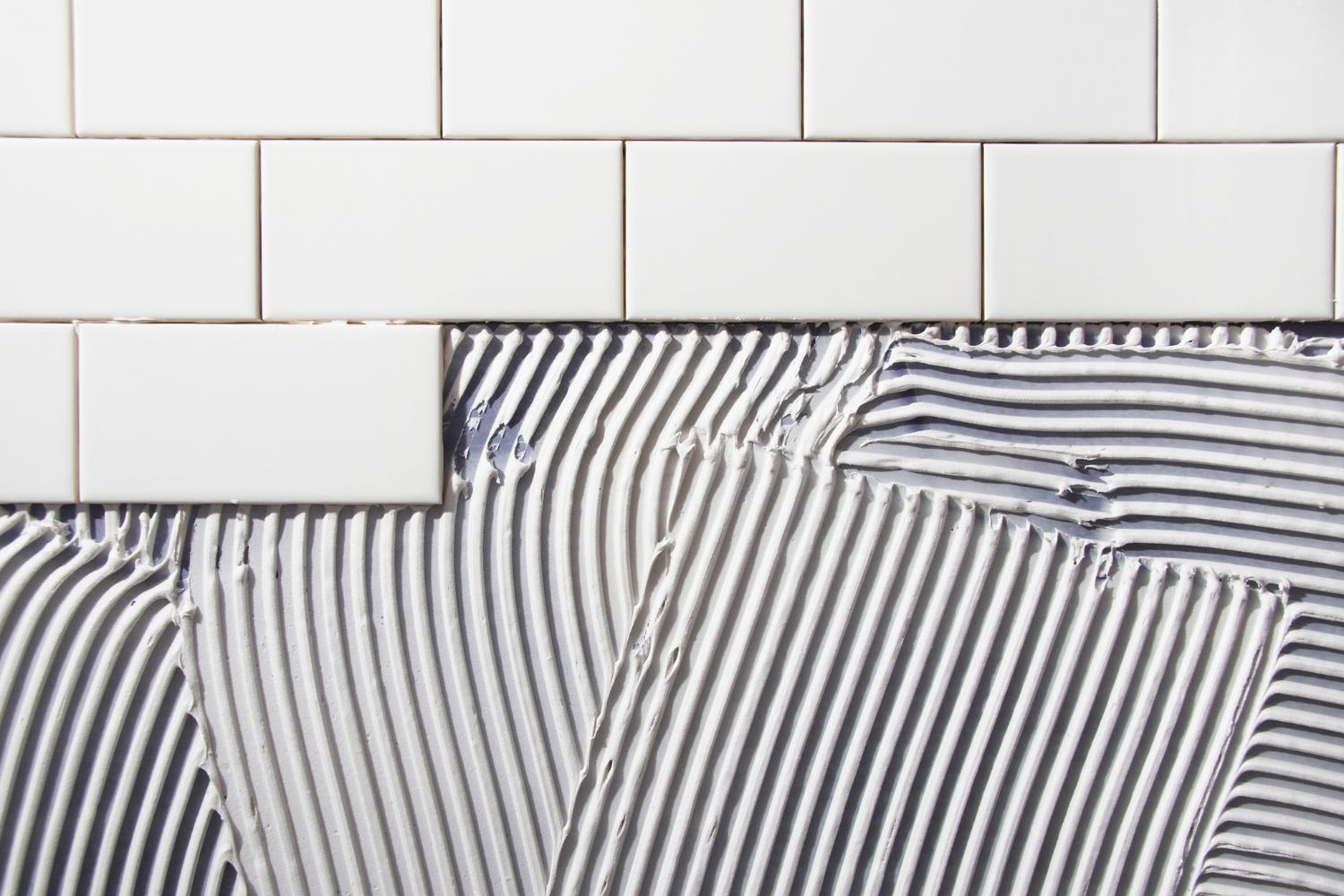
Additional Costs and Considerations
When budgeting for the cost of a backsplash for a kitchen, homeowners will find that there are additional price factors and considerations that can change the total tile installation cost or cost for other backsplash materials. These can include the price difference between a stone slab and tile, backsplash replacement, design fees, and additional customizations and enhancements.
Stone Slab vs. Tile
There are two main choices when homeowners are deciding on backsplash material: a solid slab of engineered or natural stone, or tile. Some homeowners prefer the uninterrupted design that comes from using the same material for the backsplash that is used for the countertops. A solid slab of granite, marble, or quartz saves time on installation, since applying grout is not needed as it is for a tile backsplash. Stone slabs are installed at the same time as the countertops, require precise measurements to ensure an exact fit, and require two or three people to maneuver and install. These factors can make the installation of a stone slab more expensive than the cost of tile backsplash installation, even though a stone slab takes less time to install than tile. Tile backsplashes are a very popular way to create a unique focal point in a kitchen or bathroom. The wide selection of colors, shapes, and sizes can match any design aesthetic.
Backsplash Replacement
It’s common to lump in backsplash installation or replacement when taking on kitchen remodel cost or when budgeting for the cost of a new tile floor. If some tiles are damaged or it’s time to update the look of a kitchen, a backsplash replacement can transform the space at a fraction of the cost of a complete renovation. A tile backsplash can typically be removed easily, but if the tiles were installed incorrectly, the removal process may damage the drywall. Knowing how to remove tile or other backsplash materials can prevent the additional expense of replacing or repairing the drywall underneath. Removing a backsplash costs between $1 and $3 per square foot, and replacing a 30-square-foot backsplash can range from $930 to $2,590, depending on the type of material and the design.
Design Fee
For elaborate and complex backsplash designs, it’s common for installation professionals or the best handyman services to charge a higher rate of up to double the average labor cost. Homeowners interested in a herringbone design or an intricate mosaic backsplash can expect to pay about $100 per hour, or $500 per day.
Customizations and Enhancements
For homeowners who want a lighted backsplash, LED is an option. An LED backsplash uses matts that have hundreds of tiny lights affixed to them. Some backsplash materials, such as resin and glass, can be installed with lights placed behind them to illuminate the space. These customizations can cost from $3,000 to $6,000 and require a homeowner to hire a professional electrician to install and wire them to a GFCI (ground fault circuit interrupter) outlet.
Installation Cost by Type of Backsplash
The most significant factor in backsplash installation cost is the type of material. While ceramic and vinyl tile are the most popular budget backsplash options, glass mosaic backsplashes and solid stone slabs are at the higher end of the price range. Some materials require additional sealant and protection against moisture and splatters to make them easier to clean. From the best peel-and-stick backsplash options to luxurious natural stone investments, there is a type of backsplash that will match any design and budget.
Certain types of backsplash materials are easier to clean and maintain than others. When choosing a backsplash material, homeowners will want to consider how often they use their kitchen and what types of foods they typically cook. Quartz, ceramic, and glass tiles are the easiest to maintain and clean, but the grout may need to be sealed to prevent staining. Natural stone slabs and tiles made of marble need to be sealed to prevent staining, but care will need to be taken to prevent etching in the material’s surface from acidic foods, such as tomato sauce and citrus juice. For the best results, homeowners are advised to use a cleaner that is designed specifically for the backsplash material. Typically, solid quartz slabs require the least amount of maintenance, since there are no grout lines and the material doesn’t need to be sealed.
It’s important to note that ceramic tiles can craze over time, meaning the glaze of the surface of the tile can crack. This cracking results from the repeated cycle of heating up and cooling down when the ceramic tile is installed near a stovetop or other heat source. To prevent staining, the tile will need to be sealed. Ceramic, glass, and quartz are considered low-maintenance backsplash materials with a high resistance against staining, while marble requires more attention and maintenance and has a moderate stain resistance. Some backsplash materials may be more popular than others, but homeowners are advised to consider the material and design concept before installing a trendy kitchen backsplash or design that they may come to regret. Below are the most popular types of backsplash materials and their costs.
Aluminum
Aluminum backsplashes are popular in modern kitchens with a sleek design, although installing this material behind a stove where it can heat up, melt, and corrode is not recommended. Aluminum backsplash material ranges from $900 to $2,250, including installation.
Beadboard Panels
Beadboard backsplash material is sold in panels and slats. Homeowners can choose from hardwood or imitation wood made from medium-density fiberboard (MDF) or PVC (polyvinyl chloride). Hardwood beadboard can cost $1 per square foot, and other non-wood variations can cost from $0.50 to $0.75 per square foot. A beadboard backsplash can run from $11.80 to $13.50 per square foot installed.
Brick
Brick veneer backsplashes are fire-resistant, which makes them a popular choice for use behind stoves and cooktops. This material costs between $300 and $400 and ranges from $500 to $700 for installation in a 30-square-foot space. Homeowners can choose from multiple colors and finishes to customize the backsplash area. Brick backsplashes need to be sealed so the material can be cleaned easily with soap and water.
Ceiling Tile
Ceiling tiles are available in various materials, sizes, and colors. The price of materials ranges from $900 to $1,500, while installation costs to cover a 30-square-foot backsplash range from $1,200 to $3,000. Some popular ceiling tile materials include glass, ceramic, tin, and granite. These can be used to create unique patterns, but the embossed designs on each tile can make the backsplash difficult to keep clean.
Ceramic Tile
Ceramic is a popular type of backsplash tile for kitchen or bathroom use.The cost of ceramic tile can range from $1 per square foot to more than $100 per square foot for handmade tile. Different types of tile can be used in the same design to create a distinctive look that will match the overall style of the kitchen or bathroom. A professional tile installation expert will typically charge between $10.50 and $11 per square foot to install ceramic tile.
Chalkboard Paint
Homeowners interested in having a black backsplash will sometimes choose chalkboard paint. Chalkboard paint costs from $20 to $25 per gallon, and the price to have a professional paint a 30-square-foot backsplash area ranges from $170 to $325. This type of paint works as a chalkboard for family members to write messages or notes on the backsplash area, and it’s easy to clean.
Glass Tile
Glass tiles can cost from $10 to $40 per square foot for the material and between $20 and $50 per square foot for installation. The wide range in pricing is due to the variety of styles, colors, and finishes that are available. Typically, the more intricate the glass tiles, the more expensive the cost.
Marble or Granite Tile
Marble or granite tile costs from $17 to $110 per square foot for a professional installation. These luxury materials can cost from $7 to $15 per square foot, and high-end finishes can increase the overall price. When budgeting for the cost of marble countertops, some homeowners will decide to install a marble backsplash to match. The price of rare marble can skyrocket to $100 per square foot, not including installation, but homeowners are advised to keep in mind that marble or granite tiles are typically less expensive than solid slabs.
Metal
Homeowners who have a modern kitchen design often choose to install a metal backsplash to create contrast with the countertop material. Material prices range from $600 to $1,500, with installation for a 30-square-foot backsplash costing $900 to $3,000. Stainless steel is easy to clean and is available as tiles or as a solid sheet of material.
Mirrors
A mirrored backsplash can make a small and dark kitchen area appear bigger and brighter. The material costs from $240 to $450, and installation prices range from $480 to $780 for a 30-square-foot space. The material can be installed with individual mirrored tiles or as one large mirror. Homeowners will want to keep in mind that a mirrored backsplash requires frequent cleaning.
Plastic Panels
Plastic backsplash panels are usually made from PVC and are commonly found as peel-and-stick sheets. One of the most popular options is peel-and-stick subway tile, since it’s a more budget-friendly version of actual subway tile. Plastic backsplash panels cost from $10 to $20 per square foot, and the price can increase by an additional $10 per square foot for a professional installation.
Porcelain Tile
More durable than ceramic tile, porcelain tile is a very popular backsplash tile material. The individual tiles can cost from $3 to $30, with custom and luxury tiles costing more. Installation prices for porcelain tile range from $13 to $30 per square foot.
Quartz
Quartz is a manufactured material that’s constructed of approximately 90 percent natural quartz and 10 percent resins and pigments. It’s extremely durable, easy to clean, and stain-resistant. Homeowners can expect to pay from $300 to $3,000 for materials and from $600 to $4,500 for installation of a 30-square-foot quartz backsplash.
Slate Tile
Slate tiles typically cost between $4 and $10 per square foot and more than $28 per square foot for high-end options; a backsplash professional can charge from $14 to $38 per square foot for installation. This natural stone is durable and heat-resistant, which makes it an excellent material for use behind cooktops.
Stainless Steel
Stainless steel is a popular backsplash material in contemporary kitchens. Available as solid sheets or individual tiles, it’s corrosion-resistant and durable. Stainless steel sheets cost from $40 to $90 per square foot, while stainless steel tiles run from $10 to $35 per square foot. Professional installation can add another $10 per square foot.
Stone Slab
Stone slab backsplashes are a luxury investment for many homeowners. It’s common for homeowners with natural stone countertops to choose matching backsplash material to create a cohesive look throughout the kitchen or bathroom area. Typically, there is a wide range of pricing for stone slabs due to the different types of stone, rarity, weight, and size. A stone slab backsplash can cost between $35 and $310 per square foot to install, and labor prices can increase by $30 per square foot due to the heavy weight and extra time it takes to maneuver.
Tin
Using tin tiles or sheets for a backsplash material is a popular option in modern farmhouse kitchens, as it’s easy to clean and fits in with the overall aesthetic. Tin backsplash material can cost from $10 to $30 per square foot, including installation.
Travertine Tile
Using high-quality backsplash materials such as travertine can cost from $25 to $50 per square foot for a solid slab. This easy-to-clean material lends soft color and a luxurious touch to any kitchen or bathroom.
Vinyl Tile
Vinyl tile is a popular, budget-friendly option to use for a backsplash. Although it’s available in a wide range of colors, styles, sizes, and designs, it’s not recommended for installation near a stove or cooktop. There are peel-and-stick options that are DIY friendly and can cost from $2 to $10 per square foot. Homeowners can expect to pay between $12 and $20 per square foot for a professional installation.
Wallpaper
Wallpaper is an excellent option for homeowners who don’t want to spend money on expensive tile or natural stone for a backsplash. Specialty backsplash wallpaper is thicker and easier to clean than wallpaper that’s intended for use in other areas of the home. There is a variety of patterns, textures, and colors available for backsplash wallpaper; it typically costs from $30 to $50 for materials and $110 to $250 for professional installation for a 30-square-foot area.
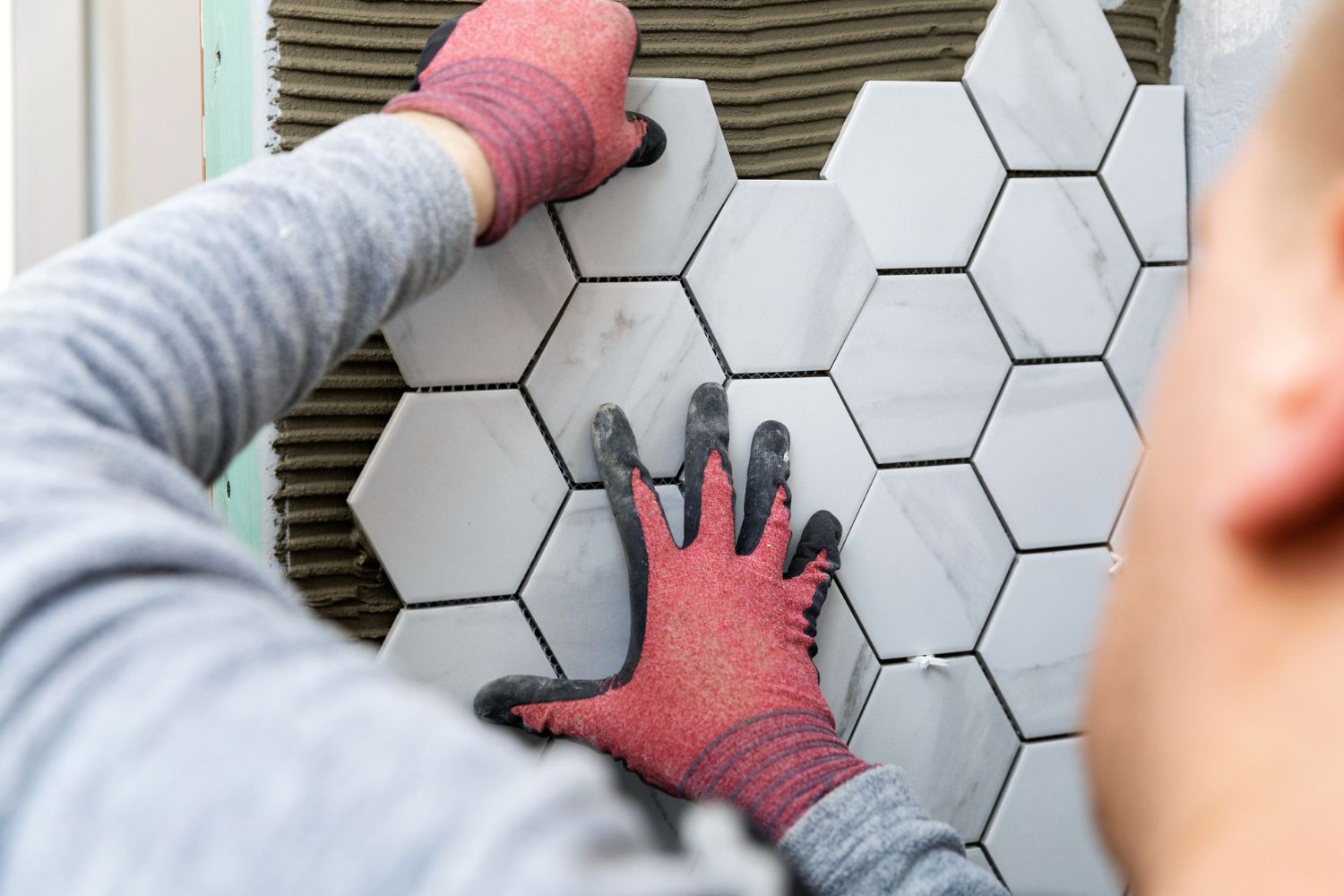
Benefits of Backsplash Installation
A beautiful backsplash isn’t just for visual appeal; it has a range of benefits and advantages, which include moisture and pest protection, easier cleaning and maintenance, customization options, and increased home value.
Moisture Protection
Installing a kitchen or bathroom backsplash can protect the wall from moisture damage. Splashing water and cleaning the area could damage a bare wall and encourage mold and mildew growth. Sealing the wall with backsplash material will ensure the durability and quality of the area.
Pest Protection
Cracks in the drywall and in between the countertop and wall can welcome pests and bugs into the area. By installing a backsplash, homeowners can ensure that any cracks or open spaces are sealed and protected against unwelcome guests.
Easier Cleaning and Maintenance
Messes and splashes are a reality in any well-used kitchen or bathroom space. Tiling a backsplash can make the area easy to clean with a simple soap-and-water wiping down.
Ease of Installation
Backsplashes add a unique focal point to a kitchen and boost the visual appeal of the room. Installing a backsplash is typically a quick project compared to renovating the entire kitchen with tile.
Customization Options
With so many colors, styles, textures, sizes, and designs that are available, homeowners will have an easy time finding a backsplash material that works with their personal style. From metal sheets to glass tiles to solid stone slabs, backsplashes can be customized to work with any space.
Improved Aesthetics
A backsplash can add personality and visual interest to a kitchen or bathroom. It can add a pop of color or texture to a space to elevate the style and overall aesthetics of the room.
Increased Home Value
Upgrading a kitchen backsplash can update and modernize the space while making it more appealing to potential home buyers.
Backsplash Installation: DIY vs. Hiring a Professional
Installing a backsplash can be a manageable DIY project for homeowners who have experience working with the chosen materials. The easiest route is peel-and-stick options, but installing a tile backsplash is doable if the kitchen layout is straightforward without tricky corners or cutouts. Ceramic and porcelain tiles can be installed as a DIY project since they can be cut with a score-and-snap tool or a tile saw. Homeowners are advised not to install mosaic or glass tiles, since both materials require extensive knowledge and specialty equipment for a successful installation. DIY backsplash installation also requires buying adhesive, grout, and sealant, along with the application tools. Some types of tiles are more difficult to install than others, so if a homeowner doesn’t feel 100 percent comfortable installing a backsplash, it’s recommended that they hire a professional—especially if they want to install custom-cut tiles or a solid stone slab.
How to Save Money on Backsplash Installation Cost
Installing a backsplash can update the look of a kitchen, create visual interest, and protect the area from water damage. Depending on the price of materials and the complexity of the design, a backsplash can cost a considerable amount of money. Below are some money-saving tips to follow when budgeting for backsplash installation cost.
- Get multiple estimates. Get at least three estimates from reputable backsplash contractors in your area to find a price that works with your budget.
- Remove the old backsplash on your own. To save some money on labor, you can carefully remove the old backsplash while making sure not to damage the drywall underneath.
- Go simple. Opting for a simple backsplash design instead of a complex mosaic can save on installation costs.
- Choose ceramic. Ceramic tiles come in a variety of colors and styles and can cost as little as $1 per square foot.
- Consider the shape. Rectangular and square tiles typically take less time to install than round or custom-cut tiles, leading to lower labor costs.
- Reduce the backsplash area. Instead of covering the entire space between the top of the countertops and the bottom of the cabinets with the backsplash material, you can save money by tiling a smaller space.
- Think outside the box. Using unusual materials for a backsplash, such as wood paneling, or affixing decals to the already existing backsplash can update the look of the area at a lower cost than using traditional and often pricier materials.
- Shop around. Look for sales or discounts on materials that may be discontinued. Some stores that sell tile and other backsplash materials may offer discounts at certain times of the year.
- Install the backsplash at the same time as the countertops. If you’re planning on installing new countertops, consider doing the backsplash as well. Some contractors may charge less for backsplash installation if it’s a combined project.
- Purchase the tile yourself. Buying the backsplash tile or other material directly from the distributor can save money on the installer’s markup.
Questions to Ask About Backsplash Installation
Asking a backsplash installation professional the right questions can help avoid miscommunication and save homeowners money on the project. Below are some questions to ask about backsplash materials and the installation process.
- Are you licensed and insured?
- Do you belong to any professional organizations?
- Can you provide references?
- Do you have a portfolio of previous backsplash installation jobs you’ve completed?
- What is your safety policy for installation projects?
- How long will the backsplash installation take?
- Do you hire subcontractors at any point in the installation process?
- Should I be home during the installation?
- Do I need to remove any kitchen appliances, or will you remove them and replace them after the backsplash installation?
- Do you need to know how many switch plates and outlets are in the backsplash area?
- Do you make or sell tile?
- What type of backsplash material do you recommend for my space?
- What are my options for customization?
- Do you offer senior citizen or military discounts?
- What happens if the backsplash material is damaged during installation?
- What warranties do you provide?
- Do you offer guarantees on your work?
- What is your payment plan?
- How can I leave a review of your services?
FAQs
When budgeting for backsplash installation cost, homeowners will benefit from having all the information about the average cost of backsplash installation and the installation process. Below are some frequently asked questions.
Q. What is the average cost for backsplash installation?
The average backsplash installation cost is about $1,000, but some homeowners spend as little as $592 to use peel-and-stick panels, while others can spend more than $1,317 for custom mosaic designs. The overall cost depends on the material, the square footage of the space, and local labor costs. The pricing of backsplash materials can range from $11 to $310 per square foot, including installation.
Q. Can I install a backsplash on my own?
Yes, a homeowner can install a backsplash on their own, provided they feel comfortable tackling this project. Those with intermediate DIY experience can install a ceramic or porcelain tile backsplash successfully with the proper tools and planning. If you’re planning on installing solid stone slabs or an intricate glass mosaic tile design, it’s best to hire a professional, since solid stone slabs can weigh hundreds of pounds and installing a complex backsplash design takes experience. There is a high risk factor of damaging a solid stone slab, or of personal injury, if it’s not moved carefully.
Q. Does a backsplash increase home value?
Absolutely. Compared to other updates that can be made around the home, a backsplash installation is relatively inexpensive. A backsplash can add value to a home by making the kitchen or bathroom area look complete, modernize and update the space, and protect the walls from water damage and stains. By adding value to the space, a homeowner can increase the desirability of the home once they decide to put it on the market.
Q. How long does a backsplash last on average?
A properly installed backsplash can last for decades. Porcelain is the most durable backsplash material, followed by glass and ceramic. How long a backsplash will ultimately last depends on the quality of the installation and the material. Homeowners will want to keep the overall style of the backsplash design and material in mind. If a trendy backsplash looks outdated after only a year or two, they may want to replace it for an updated look or consider a more traditional design at the outset.
Q. Can I put a backsplash on a regular wall?
As long as the wall is in good condition and it’s flat and smooth, a backsplash can be installed directly over plaster or drywall with no problems. To ensure a proper installation, the wall should be cleaned of any grease, dirt, and grime before a thin layer of tile adhesive is applied. After the adhesive has set, grout can be applied.
Q. Do I need to prep the wall for backsplash installation?
The wall area needs to be prepped before a backsplash is installed. To prep the space, homeowners can follow these steps:
- Remove loose paint by scraping the area, and fill any cracks or holes. Even out the entire wall surface by using sandpaper to create a smooth area.
- Wipe the wall with a damp rag or tack cloth to remove any sanding dust or dirt, grease, and grime.
- Use a vacuum with a brush attachment to remove any lingering dust.
- Fill a cleaning bucket with a gallon of hot water, and add ½ cup of trisodium phosphate (TSP), a degreasing cleaner. This can be found at a local hardware store.
- Apply rubber gloves, and clean the wall with a sponge dipped in the hot water and TSP solution.
- Let the solution sit on the wall for about 2 minutes.
- Rinse the wall area with a clean sponge and fresh hot water.
- Allow the wall area to air-dry thoroughly before applying the tile adhesive.
Sources: HomeAdvisor, Angi, Fixr

